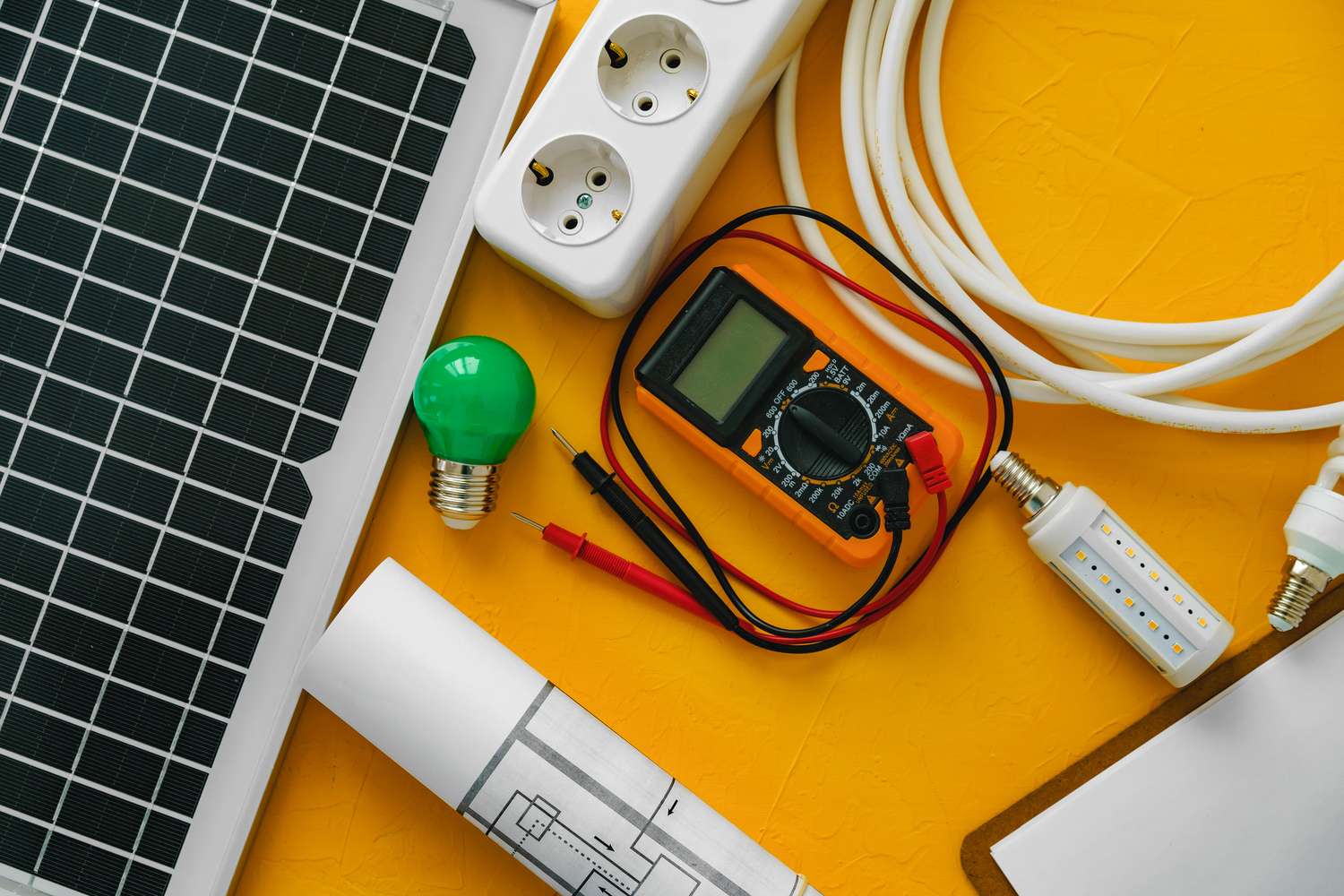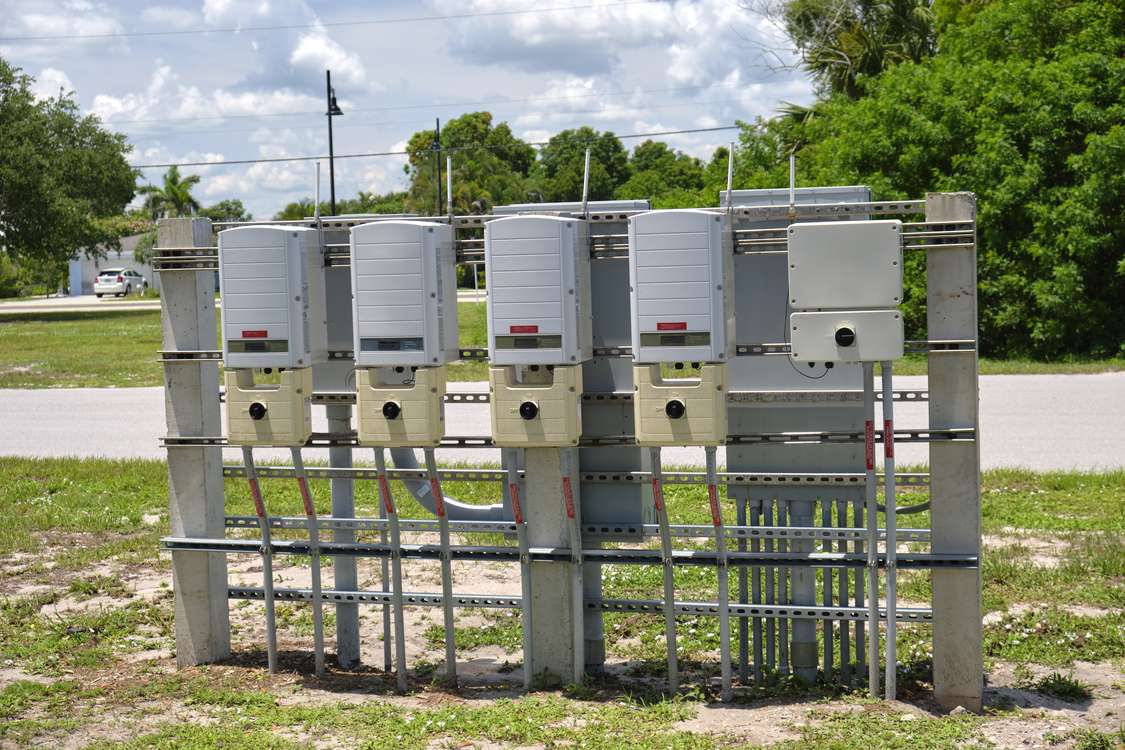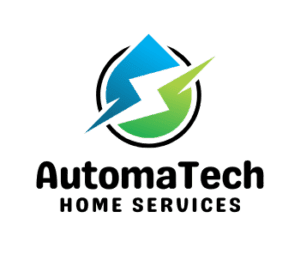In the last few years, there has been a growing interest in sustainable and self-sufficient energy solutions, and off-grid solar systems have emerged as a popular choice for those seeking independence from traditional power sources. An off-grid solar system is designed to generate and store electricity from the sun’s rays, enabling users to meet their energy needs without relying on a connection to the central power grid. Do you have ever thought about what are the components of a solar system? Here’s the list of components you need if you want to create your own solar system:
We’re going to explore the key components that make up an off-grid solar system and how they work together to provide a reliable source of renewable energy.
Solar Panels

In any off-grid solar system, there are solar panels, also known as photovoltaic (PV) panels. These panels consist of multiple solar cells that convert sunlight directly into electricity through the photovoltaic effect. The photovoltaic effect is the underlying principle behind the operation of solar panels. It involves the generation of an electric current when certain materials, typically semiconductors like silicon, are exposed to sunlight. When photons (particles of light) from the sun strike the surface of the solar cells within the panels, they transfer their energy to the electrons within the semiconductor material. This energy causes the electrons to become energized and move, creating an electric current.
Solar panels consist of multiple solar cells interconnected to form a module. Each solar cell is made up of layers of semiconductor materials, usually silicon. The silicon is treated to create a “p-n junction,” a boundary between two types of silicon that have different electrical properties. This junction allows for the separation of charges and the creation of an electric field, enabling the generation of electricity when exposed to sunlight.
The efficiency of a solar panel refers to its ability to convert sunlight into electricity. Higher-efficiency panels produce more electricity for a given amount of sunlight. Efficiency is influenced by factors such as the quality of the materials, manufacturing processes, and the technology used. Modern monocrystalline panels can achieve efficiency levels of around 20-25%, while polycrystalline panels typically range from 15-20%.
To maximize the energy output of solar panels in an off-grid system, proper installation and orientation are crucial. Panels should be placed in a location that receives maximum sunlight exposure throughout the day. The ideal orientation depends on the geographic location; in the northern hemisphere, panels are typically oriented south to capture the most sunlight. Additionally, the tilt angle of the panels can be adjusted to optimize energy generation based on the latitude of the installation site.
There are several types of solar panels available, each with its own characteristics and efficiency levels. The most common types include:
Monocrystalline Solar Panels
These panels are made from single-crystal silicon, offering higher efficiency and a sleek black appearance. They are space-efficient and perform well in limited sunlight conditions.
Polycrystalline Solar Panels
These panels are made from multiple silicon crystals, which can result in slightly lower efficiency compared to monocrystalline panels. However, they are typically more cost-effective.
Thin-Film Solar Panels
These panels use thin layers of semiconductor materials deposited on various substrates. They are less efficient than crystalline panels but can be more flexible and versatile in terms of installation.
Solar panels are relatively low-maintenance components. However, regular cleaning to remove dirt, dust, and debris is recommended to ensure optimal performance. Proper maintenance can extend the lifespan of solar panels, which typically have warranties ranging from 20 to 25 years. Over time, the efficiency of panels may degrade slightly, but they can continue to produce electricity for many years.
Solar Charge Controller

A solar charge controller, also known as a charge regulator, is a critical component of an off-grid solar system. Its primary function is to manage and regulate the flow of electricity between the solar panels and the battery bank. The charge controller ensures that the batteries are charged safely and efficiently, preventing overcharging and extending their lifespan.
A solar charge controller, also known as a charge regulator, is a critical component of an off-grid solar system. Its primary function is to manage and regulate the flow of electricity between the solar panels and the battery bank. The charge controller ensures that the batteries are charged safely and efficiently, preventing overcharging and extending their lifespan. There are different types of charge controllers available, each with specific features to suit various system requirements:
PWM (Pulse-Width Modulation) Charge Controllers
These controllers regulate the charging process by rapidly turning the charging current on and off. PWM controllers maintain a constant voltage, but the current is varied to prevent overcharging. They are more basic compared to MPPT controllers and are suitable for smaller off-grid systems.
MPPT (Maximum Power Point Tracking) Charge Controllers
MPPT controllers are more advanced and efficient. They actively track the maximum power point of the solar panels, adjusting the voltage and current to ensure the highest possible energy conversion efficiency. MPPT controllers are better suited for larger systems and environments with varying sunlight conditions.
Charging stages refer to the different phases through which a solar charge controller manages the process of charging batteries in an off-grid solar system. These stages are designed to optimize battery performance, ensure safe and efficient charging, and extend the overall lifespan of the batteries. The charging stages typically include the following:
Bulk Stage
During this stage, the charge controller allows the maximum available current to flow from the solar panels to the batteries. This rapid charging continues until the battery voltage reaches a specific setpoint.
Absorption Stage
Once the battery voltage reaches the setpoint, the charge controller reduces the charging current to a level that prevents overcharging. The batteries are held at a constant voltage to ensure a full charge.
Float Stage
After the absorption stage, the charge controller switches to the float stage, where the charging voltage is reduced to a lower level. This stage maintains the batteries at a fully charged state without causing damage from overcharging.
Equalization (Optional)
Some charge controllers offer an equalization stage, which involves briefly increasing the charging voltage to help balance the cells within lead-acid batteries. This stage can help extend the overall battery lifespan.
Modern charge controllers come equipped with a range of sophisticated protection features designed to safeguard both the batteries and the entire off-grid solar system. These features play a crucial role in preventing potential damage, ensuring system longevity, and maintaining safe operation. As solar systems become more advanced, these protection mechanisms have become integral components of charge controllers.
One of the fundamental protection features in modern charge controllers is overcharge protection. This mechanism prevents the batteries from being charged beyond their safe capacity. When the batteries reach their fully charged state, the charge controller reduces the charging current or switches to a maintenance mode, preventing excess energy from causing damage, such as electrolyte loss or heat buildup. Overcharge protection ensures that the batteries are not subjected to conditions that could shorten their lifespan.
Over-discharge protection is equally essential, as it prevents batteries from being drained to unsafe levels. When the charge in the batteries drops to a predetermined threshold, the charge controller disconnects the load or stops drawing power from the batteries. This prevents deep discharges, which can damage battery cells and lead to reduced capacity and performance. Over-discharge protection is crucial for maintaining battery health and preventing irreversible damage.
Many charge controllers incorporate temperature compensation to adjust charging parameters based on the ambient temperature. Battery performance can be affected by temperature fluctuations, and improper charging in extreme temperatures can lead to inefficient charging or damage. Temperature compensation allows the charge controller to modify charging voltages and currents to account for temperature variations, optimizing the charging process and prolonging battery life.
Short-circuit protection is a safety feature that detects and responds to electrical shorts in the system. If a short circuit occurs, the charge controller interrupts the flow of current to prevent overheating, fire, or damage to system components. This protection mechanism ensures the safety of the solar system, preventing hazardous situations and minimizing the risk of system failure due to electrical faults.
Battery Pack

The battery pack is a vital component of an off-grid solar system, responsible for storing the excess electricity generated by the solar panels so that it can be used during periods of low sunlight or at night. The battery pack ensures a continuous supply of electricity, even when the solar panels aren’t producing energy.
The battery pack acts as a reservoir, storing the excess energy that isn’t immediately consumed by the connected devices or appliances. This stored energy can be used during times when the energy demand exceeds the solar panel output, such as during the night or on cloudy days. You should also check the capacity of a battery pack, it refers to the amount of energy it can store. It’s typically measured in kilowatt-hours (kWh). Choosing the right battery capacity is essential to ensure that the off-grid solar system can meet the energy needs of the household or facility during periods of low sunlight. Factors such as energy consumption, the number of appliances, and the number of days of autonomy (the number of days the system can run without sunlight) will determine the required battery capacity.
The depth of discharge refers to the percentage of the battery’s capacity that can be safely used without damaging the battery’s performance or lifespan. Different battery chemistries have varying recommended DoD levels. It’s important to avoid regularly discharging batteries beyond their recommended DoD to prevent premature degradation. For advanced battery technologies like lithium-ion, a battery management system (BMS) is often integrated into the battery pack. The BMS monitors and manages individual battery cells, ensuring they are charged and discharged evenly and protecting the batteries from overcharging, over-discharging, and other potentially damaging conditions.
There are several types of batteries used in off-grid solar systems, each with its own characteristics, advantages, and limitations. The choice of battery type depends on factors such as system size, energy requirements, budget, and maintenance preferences. Common types of batteries used in off-grid solar systems include:
Lead-Acid Batteries
These are the traditional and cost-effective choices. They are available in two main categories: flooded lead-acid batteries and sealed lead-acid batteries (AGM or Gel). Lead-acid batteries are known for their reliability, but they require proper ventilation and regular maintenance.
Lithium-Ion Batteries
Lithium-ion batteries are more energy-dense, have a longer lifespan, and require less maintenance compared to lead-acid batteries. They are also lighter and more compact, making them a popular choice for off-grid systems where space is limited.
Saltwater Batteries
These batteries use saltwater electrolytes, which are safer for the environment and have a longer cycle life compared to some other battery types. They are still relatively new in the market but are gaining attention for their sustainability.
The maintenance requirements for battery packs vary based on the battery type. Lead-acid batteries, for example, require periodic maintenance, including checking electrolyte levels and ensuring proper ventilation. In contrast, lithium-ion batteries generally require minimal maintenance but should be monitored for optimal performance. The battery pack serves as the backbone, providing stored energy for times when the solar panels aren’t producing electricity. Properly selecting the right battery type, capacity, and maintenance approach is crucial for ensuring reliable energy storage and consistent power supply in an off-grid setup.
Inverter

An inverter is a crucial component in an off-grid solar system that converts the direct current (DC) electricity generated by the solar panels or stored in the battery pack into alternating current (AC) electricity that can be used to power household appliances and devices. In an off-grid system, where the central power grid is not available, the inverter plays a pivotal role in providing usable electricity for various applications. Solar panels generate DC electricity through the photovoltaic process. However, most household appliances and devices operate on AC electricity. An inverter converts the DC electricity from the solar panels or battery pack into AC electricity, enabling the efficient use of the energy generated by the system.
The capacity of an inverter is measured in watts or kilowatts and determines the maximum load it can support. When selecting an inverter for an off-grid system, it’s essential to choose an inverter with a capacity that meets or slightly exceeds the anticipated peak load of the appliances and devices you plan to power simultaneously. Oversizing the inverter can lead to inefficiencies while undersizing it can result in power limitations. Inverter efficiency refers to how well the inverter converts DC electricity into AC electricity. Efficient inverters minimize energy losses during the conversion process, ensuring that more of the generated or stored energy is available for use. Higher-quality inverters tend to have better efficiency ratings.
Advanced inverters often come with built-in monitoring and control features. These features allow users to monitor the inverter’s performance, energy production, and energy consumption. Some inverters can be connected to online platforms, enabling remote monitoring and control via smartphones or computers. There are different types of inverters available, each with its own characteristics and applications. The choice of inverter depends on factors such as system size, load requirements, and budget. Common types of inverters used in off-grid solar systems include:
Modified Sine Wave Inverters
These inverters produce a stepped approximation of a sine wave. They are cost-effective but may not be suitable for sensitive electronics or appliances that require high-quality AC power. Modified sine wave inverters are often used in basic off-grid systems.
Pure Sine Wave Inverters
Pure sine wave inverters produce a smooth and consistent sine wave output, replicating the same quality of AC power found in grid electricity. They are compatible with all types of appliances and electronics, making them suitable for off-grid systems that power a range of devices.
Hybrid Inverters
Hybrid inverters combine the functions of an inverter with other components, such as a solar charge controller and sometimes a battery charger. They allow for seamless integration of solar panels, battery storage, and grid power when available. Hybrid inverters are versatile and can be used in grid-tied, off-grid, and hybrid setups.
Proper installation of the inverter is essential for safety and performance. Inverters should be installed in well-ventilated areas with proper clearance for heat dissipation. Adequate protection, grounding, and circuit breakers are necessary to ensure safe operation.

In conclusion, understanding the components of an off-grid solar system is essential for those seeking energy independence and sustainable power solutions. The seamless interaction of solar panels, charge controllers, battery packs, and inverters creates a harmonious ecosystem that harnesses the sun’s energy and ensures a reliable power supply even in remote locations. As technology continues to advance, the integration of these components becomes more accessible, allowing individuals and communities to embrace a greener future while enjoying the benefits of reliable off-grid energy. By recognizing the significance of each component and tailoring them to meet specific needs, we can build resilient and self-sustaining systems that contribute to a cleaner environment and a brighter future for generations to come.
